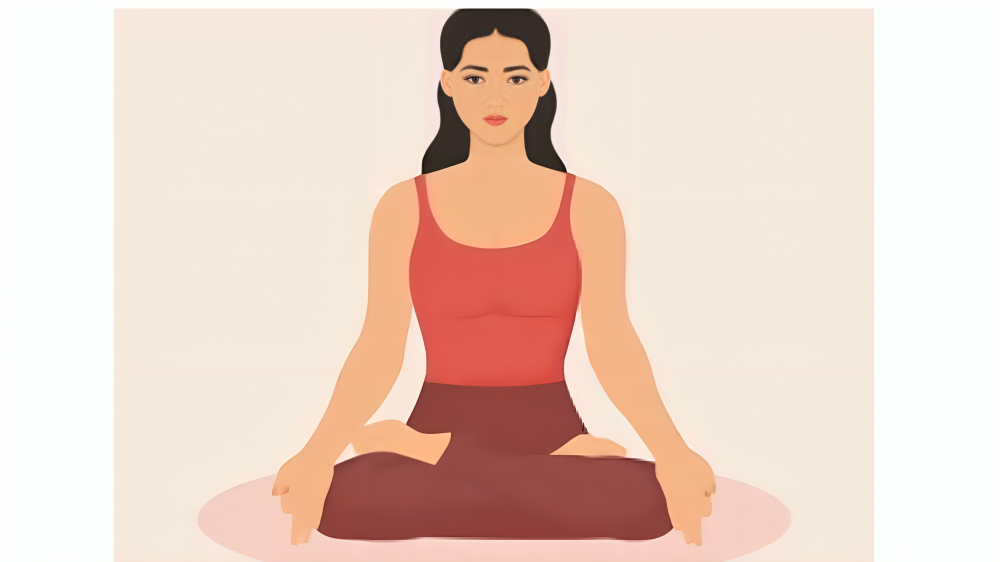
What is Padmasana?
Padmasana is a seated posture whereby you cross your legs and set your feet on the opposite thighs. The word “Padmasana” itself comes from Sanskrit words: “Padma” stands for “lotus,” and “Asana” refers to “pose” or “seat.” It has been called a lotus pose because when one sits in this way, both of his legs look like the petals of the lotus flower.
How to Do Padmasana – Lotus Pose
Start with Dandasana – Staff Pose:
Sit on the floor with your legs stretched out in front of you, keeping your back straight and placing your hands beside your hips with fingers pointing forward. This is the starting position; the name is Dandasana.
Bend Your Right Knee:
Slowly bend your right knee and draw it towards your chest. Hold onto your right ankle with both hands.
Place Your Right Foot on Your Left Thigh:
Gently lift your right foot and place it on your left thigh. Make sure the sole of your foot is upward and the heel is drawn further, as far as possible, towards your lower abdomen.
Bend Your Left Knee:
Now, take your left knee and gently bend it, drawing it towards your chest, just like you did previously with your right one.
Place Left Foot on Your Right Thigh:
Lift your left foot and set it upon your right thigh. Allow your sole of the foot to face upwards once again and the heel closer to the lower abdomen.
Change Your Posture:
Change your pose for some time. Allow your knees to touch the floor and keep your spine straight. Place your hands on your knees with your palms facing upwards. You can also make a mudra with your fingers if you want to.
Relax Yourself and Breathe:
Close your eyes and breathe deeply, feeling relaxed in the pose. Hold Padmasana for several minutes, working your way up in time as you become more comfortable in the pose.
Benefits of Padmasana
Improves Flexibility
Regular sitting in the Padmasana increases the flexibility of hips, knees, and ankles. The hip joints are opened by the stretching of muscles in the legs, which becomes flexible in due course.
Strengthen the Back and Spine
Keeping your back straight while sitting in Padmasana strengthens the muscles surrounding your spine. Accordingly, this asana will improve your posture and reduce the chances of back pain.
Soothes the Mind
Padmasana is one of the most common postures used for meditation and pranayama. This is because sitting in this position helps to sober the mind and concentrate your attention inside for reducing stress and anxiety.
Improves Digestion
Sitting in Padmasana will stimulate your digestive organs by putting gentle pressure on your abdominal region, thus improving digestion and avoiding some problems in digestion, such as constipation.
Regulates Energy Levels
Based on yoga, Padmasana is said to regulate the flow of energy in your body, thus keeping you fresh and full of life.
It’s here savasana How to Do it and what are the benefits
FAQs
Q1: Can beginners do Padmasana?
Yes, it is possible for beginners to try the Padmasana, but it may be difficult for them in the beginning. If you are a beginner in yoga or not very flexible, first practice easy seated postures, then come to this asana, Padmasana.
Q2: How long should I sit in Padmasana?
Start with a minute or two and increase progressively as you get comfortable. Try to sit in the Padmasana for at least 5 to 10 minutes daily for optimal benefits.
Q3: What if I can’t do Padmasana because of knee pain?
Padmasana is best not attempted by those with knee pain or any other knee injury. Other easy and less injurious to the knees seated postures include Sukhasana or Ardha Padmasana.

